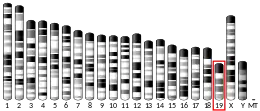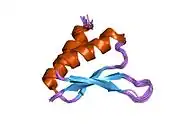| IGHMBP2 | |||||||||||||||||||||||||||||||||||||||||||||||||||
|---|---|---|---|---|---|---|---|---|---|---|---|---|---|---|---|---|---|---|---|---|---|---|---|---|---|---|---|---|---|---|---|---|---|---|---|---|---|---|---|---|---|---|---|---|---|---|---|---|---|---|---|
 | |||||||||||||||||||||||||||||||||||||||||||||||||||
| |||||||||||||||||||||||||||||||||||||||||||||||||||
| Identifiers | |||||||||||||||||||||||||||||||||||||||||||||||||||
| Aliases | IGHMBP2, CATF1, HCSA, HMN6, SMARD1, SMUBP2, ZFAND7, CMT2S, immunoglobulin mu binding protein 2, immunoglobulin mu DNA binding protein 2 | ||||||||||||||||||||||||||||||||||||||||||||||||||
| External IDs | OMIM: 600502 MGI: 99954 HomoloGene: 1642 GeneCards: IGHMBP2 | ||||||||||||||||||||||||||||||||||||||||||||||||||
| |||||||||||||||||||||||||||||||||||||||||||||||||||
| |||||||||||||||||||||||||||||||||||||||||||||||||||
| |||||||||||||||||||||||||||||||||||||||||||||||||||
| |||||||||||||||||||||||||||||||||||||||||||||||||||
| Wikidata | |||||||||||||||||||||||||||||||||||||||||||||||||||
| |||||||||||||||||||||||||||||||||||||||||||||||||||
DNA-binding protein SMUBP-2, also known as immunoglobulin helicase μ-binding protein 2 (IGHMBP2) and cardiac transcription factor 1 (CATF1) – is a protein that in humans is encoded by the IGHMBP2 gene.[5][6]
Mutations in the IGHMBP2 gene cause distal spinal muscular atrophy type 1 (distal hereditary motor neuropathy type VI).[7]
References
- 1 2 3 GRCh38: Ensembl release 89: ENSG00000132740 - Ensembl, May 2017
- 1 2 3 GRCm38: Ensembl release 89: ENSMUSG00000024831 - Ensembl, May 2017
- ↑ "Human PubMed Reference:". National Center for Biotechnology Information, U.S. National Library of Medicine.
- ↑ "Mouse PubMed Reference:". National Center for Biotechnology Information, U.S. National Library of Medicine.
- ↑ Fukita Y, Mizuta TR, Shirozu M, Ozawa K, Shimizu A, Honjo T (August 1993). "The human S mu bp-2, a DNA-binding protein specific to the single-stranded guanine-rich sequence related to the immunoglobulin mu chain switch region". The Journal of Biological Chemistry. 268 (23): 17463–70. doi:10.1016/S0021-9258(19)85357-7. PMID 8349627.
- ↑ "Entrez Gene: IGHMBP2 immunoglobulin mu binding protein 2".
- ↑ Grohmann K, Schuelke M, Diers A, Hoffmann K, Lucke B, Adams C, Bertini E, Leonhardt-Horti H, Muntoni F, Ouvrier R, Pfeufer A, Rossi R, Van Maldergem L, Wilmshurst JM, Wienker TF, Sendtner M, Rudnik-Schöneborn S, Zerres K, Hübner C (September 2001). "Mutations in the gene encoding immunoglobulin mu-binding protein 2 cause spinal muscular atrophy with respiratory distress type 1". Nature Genetics. 29 (1): 75–7. doi:10.1038/ng703. PMID 11528396. S2CID 7028396.
Further reading
- Ohtsubo S, Iida A, Nitta K, Tanaka T, Yamada R, Ohnishi Y, Maeda S, Tsunoda T, Takei T, Obara W, Akiyama F, Ito K, Honda K, Uchida K, Tsuchiya K, Yumura W, Ujiie T, Nagane Y, Miyano S, Suzuki Y, Narita I, Gejyo F, Fujioka T, Nihei H, Nakamura Y (2004). "Association of a single-nucleotide polymorphism in the immunoglobulin mu-binding protein 2 gene with immunoglobulin A nephropathy". Journal of Human Genetics. 50 (1): 30–5. doi:10.1007/s10038-004-0214-8. PMID 15599641.
- Tachi N, Kikuchi S, Kozuka N, Nogami A (April 2005). "A new mutation of IGHMBP2 gene in spinal muscular atrophy with respiratory distress type 1". Pediatric Neurology. 32 (4): 288–90. doi:10.1016/j.pediatrneurol.2004.11.003. PMID 15797190.
- Maystadt I, Zarhrate M, Landrieu P, Boespflug-Tanguy O, Sukno S, Collignon P, Melki J, Verellen-Dumoulin C, Munnich A, Viollet L (May 2004). "Allelic heterogeneity of SMARD1 at the IGHMBP2 locus". Human Mutation. 23 (5): 525–6. doi:10.1002/humu.9241. PMID 15108294. S2CID 39222622.
- Guenther UP, Schuelke M, Bertini E, D'Amico A, Goemans N, Grohmann K, Hübner C, Varon R (September 2004). "Genomic rearrangements at the IGHMBP2 gene locus in two patients with SMARD1". Human Genetics. 115 (4): 319–26. doi:10.1007/s00439-004-1156-0. PMID 15290238. S2CID 24478377.
- Shen J, Terry MB, Gammon MD, Gaudet MM, Teitelbaum SL, Eng SM, Sagiv SK, Neugut AI, Santella RM (September 2006). "IGHMBP2 Thr671Ala polymorphism might be a modifier for the effects of cigarette smoking and PAH-DNA adducts to breast cancer risk". Breast Cancer Research and Treatment. 99 (1): 1–7. doi:10.1007/s10549-006-9174-3. PMID 16752224. S2CID 9625880.
This article is issued from Wikipedia. The text is licensed under Creative Commons - Attribution - Sharealike. Additional terms may apply for the media files.






